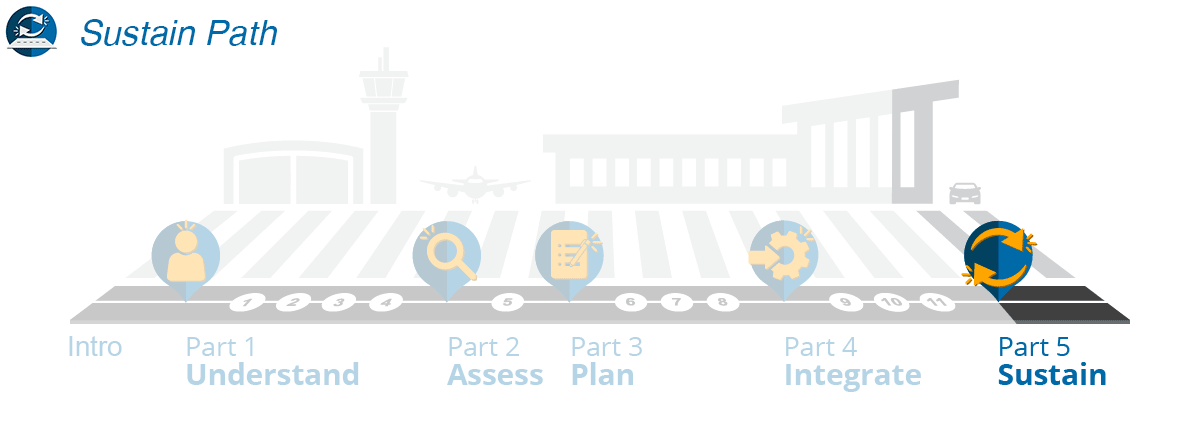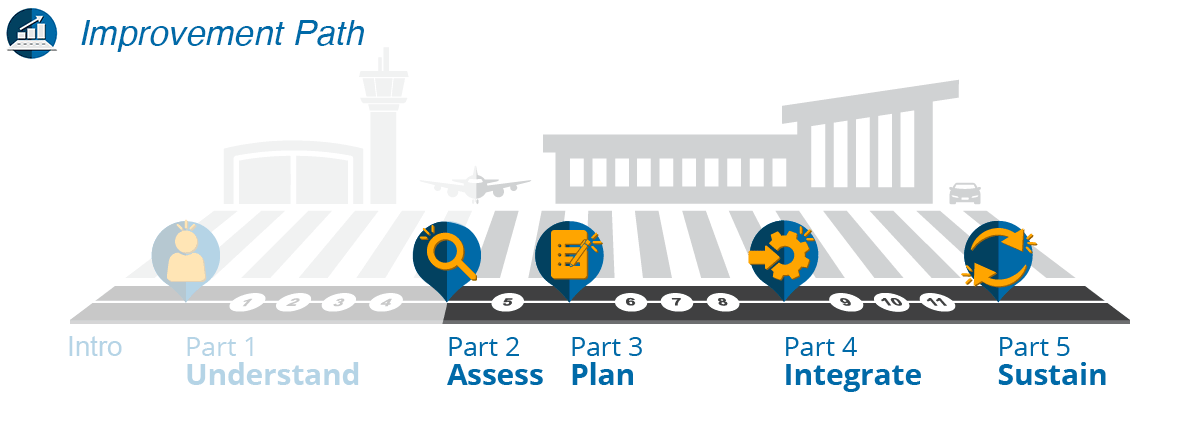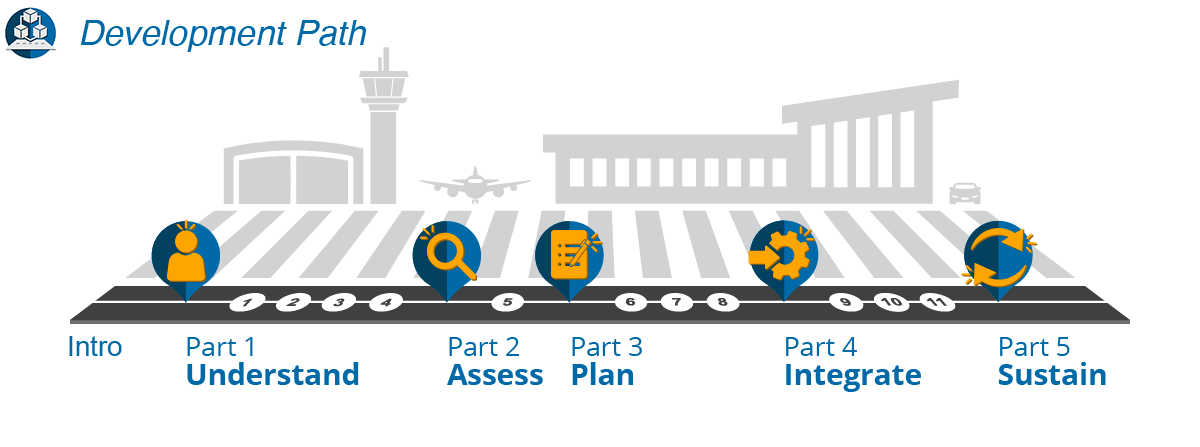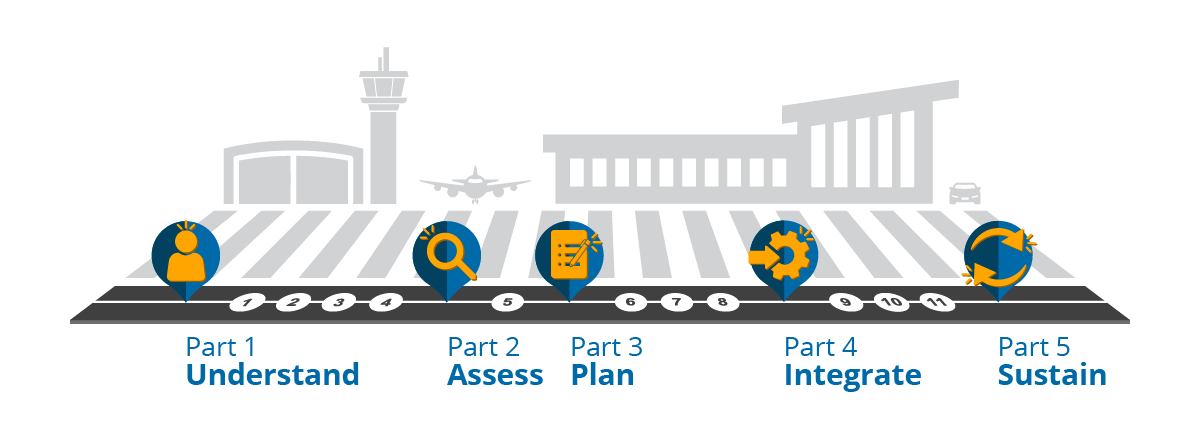
Introduction
The Need and Value of Social Media in Emergency Management
No longer can anyone ignore the prolific use of and vast opportunities presented by social media (SM). From the rise of social networking to the mobile social web and the transition to messaging apps, SM has transcended its role as an entertaining pastime and become a vital part of our lives. Now almost 80% of the US population uses SM.1 Further, the mobile app-rather than the web-browser and desktop-has taken over as the primary web access device. With this ever-present ability to reach the world, we are finding that the mobile social web is both ubiquitous and powerful as a communication tool, as well as a "news/event/gossip" channel.
In this connected culture, individuals and organizations widely accept SM as an important, if not crucial, tool for disseminating and promoting information. Most airport organizations are no exception to this; the majority of airport operators have adopted SM for marketing and public relations functions. However, there is a growing trend in airports to leverage SM for more than these functions. In light of the reach of SM and its ability to connect organizations with their customers, SM managers are becoming invaluable to emergency managers in information gathering and sharing. This has been especially key for smaller airports where staff may perform multiple roles. When SM is implemented effectively, it is proving highly useful during incidents, emergencies, and irregular operations.
The research on which this WebResource is based suggests that SM can both complement and complicate emergency management (EM). For example, during a bomb threat at one airport, portions of the gate area were isolated while the threat was being investigated. However, unbeknownst to first responders, a passenger tram was still moving through that area. Once passengers saw this, they began to post on SM to their fellow passengers that the tram was still in use. The airport SM manager saw these posts and immediately shared the information with Incident Command, who shut the tram down. The SM manager also kept passengers advised of when tram operations would restart. In another incident, a passenger indicated on an SM channel that if he received a certain number of SM "likes," he would shout "bomb" at the security screening checkpoint. Because they were actively listening, members of the airport's SM team saw this post and were able to work with public safety staff to thwart the individual's attempt, and they used SM to update passengers on the event status.
With airport and airline reputations on the line and the speed at which an incident can go viral on the web, airport SM and emergency managers are in need of a program for providing critical information to the public and to those responding to incidents. The focus of this WebResource is therefore helping airport operators build such a program for integrating SM with EM (SMEM). For those airport operators that already have an SMEM program, the information in this WebResource can aid in improving and sustaining the integration. Figure 1 demonstrates that with proper integration, SM can complement EM.
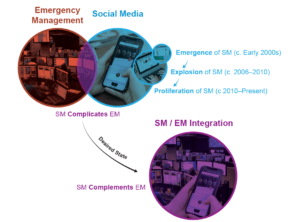
Figure 1: The Need for Integration of Social Media and Emergency Management
An SMEM program includes functions such as listening to public SM platforms for airport users' or stakeholders' posts to gain increased situational awareness. It also includes publishing on SM to share updates on any situations occurring at the airport. Further, SMEM includes effectively engaging the airport community (traveling public, stakeholders, and business and government partners) to answer questions and provide valuable discussion. This engagement can establish airport operators as trusted sources for information gathering and exchange. Following this, SMEM can also include reporting on the listening, publishing, and engagement efforts noted above to provide actionable information for responders and airport executives alike. For all of this to happen, the SM and EM managers at an airport must work together to lead the development of an SMEM program.
REFERENCES
- “Percentage of U.S. population who currently use any social media from 2008 to 2019,” Statista, updated August 9, 2019, https://www.statista.com/statistics/273476/percentage-of-us-population-with-a-social-network-profile/.
